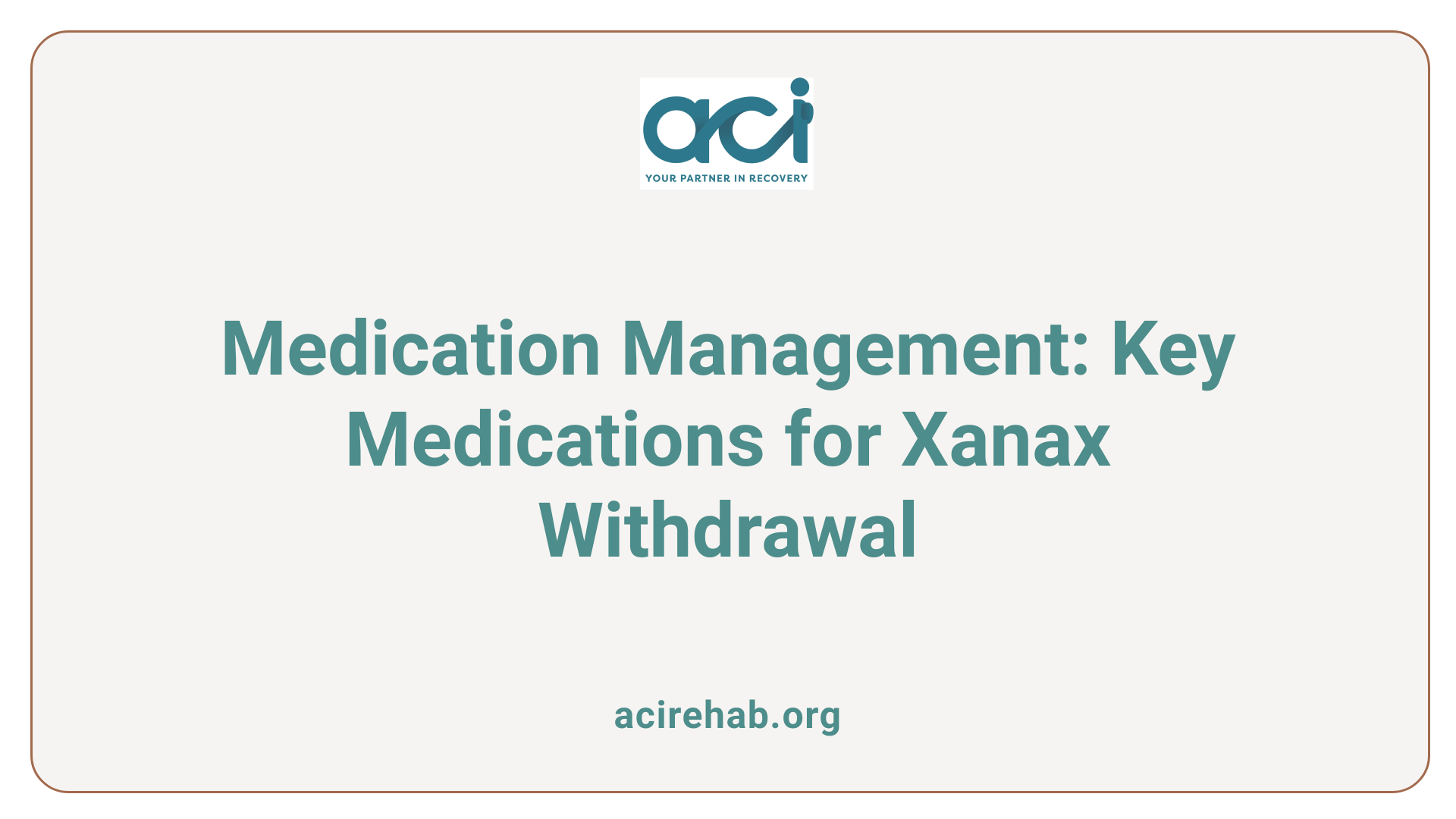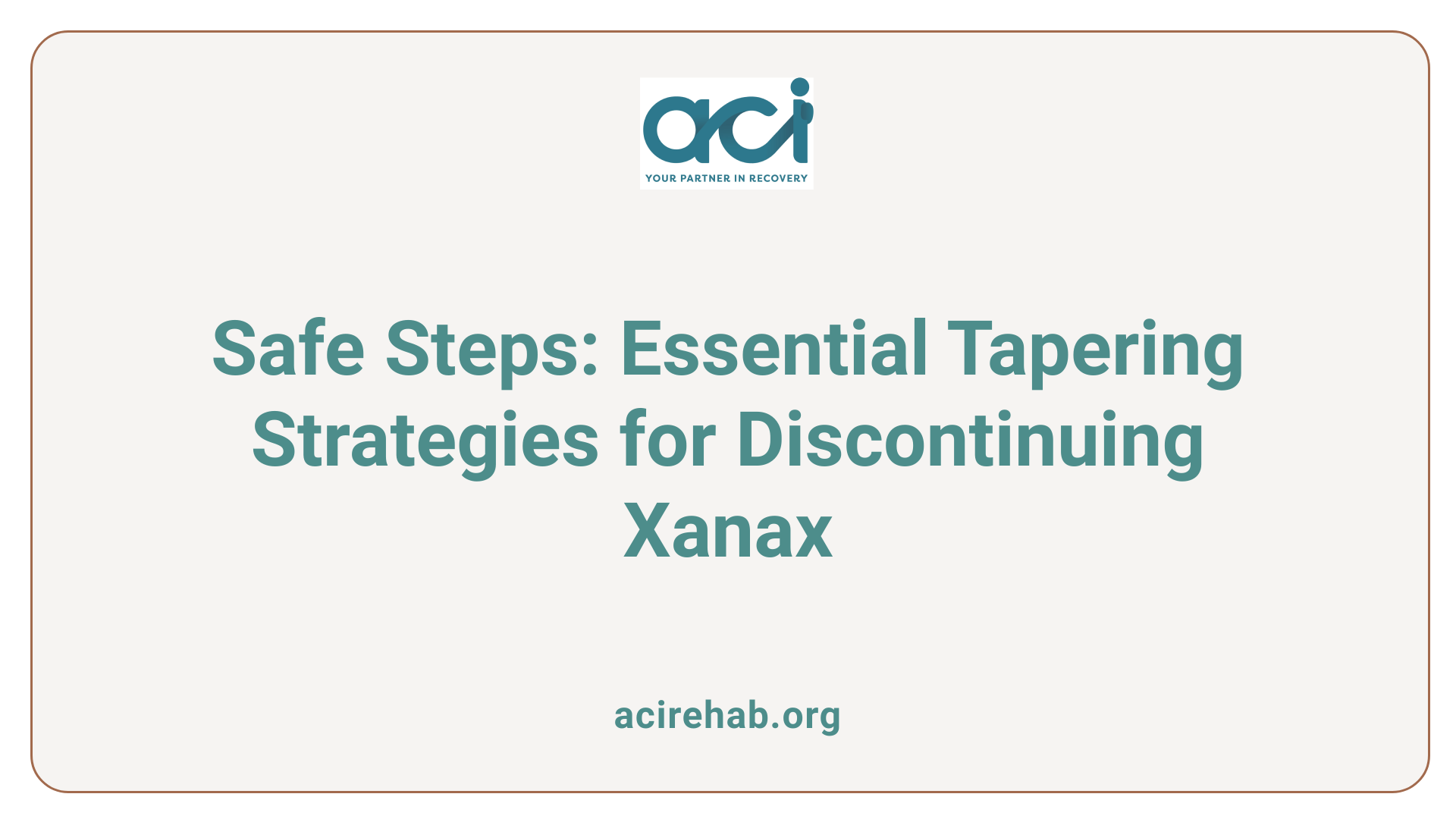Understanding Xanax Withdrawal
Xanax, a medication primarily prescribed for managing anxiety and panic disorders, is often misused, leading to dependence and the challenging process of withdrawal. This article explores effective strategies to ease withdrawal symptoms, highlighting the importance of medical supervision, tapering processes, and supportive treatments for a safer transition off the medication.
The Dangers of Abrupt Xanax Discontinuation

What are the dangers of quitting Xanax abruptly (cold-turkey)?
Quitting Xanax abruptly, often referred to as going "cold turkey," poses significant dangers to individuals. Such a sudden cessation can trigger a spectrum of severe withdrawal symptoms that include heightened anxiety, panic attacks, sleep disturbances, and in severe cases, seizures. The likelihood of seizures escalates for those with prior seizure disorders or those who have taken high dosages of Xanax for a prolonged period.
Abrupt discontinuation may result in a variety of distressing physical symptoms. Patients can experience:
- Tremors: Uncontrollable shaking that may affect the hands or other body parts.
- Muscle Pain: Discomfort and pain in various muscle groups.
- Confusion: Difficulty concentrating or a general fogginess of thought.
- Hallucinations: Experiencing sights or sounds that aren’t present.
Given these risks, medical supervision during the withdrawal process is paramount. Healthcare professionals can closely monitor symptoms and provide necessary interventions.
Ultimately, a gradual tapering plan, overseen by a medical provider, is recommended to reduce withdrawal severity.
Withdrawal Timeline
Withdrawal symptoms can begin within 8 to 12 hours after the last dose of Xanax. They tend to peak around the second day and may persist for weeks or even months in lingering cases. Managing this timeline is crucial to setting expectations for those discontinuing the medication.
| Withdrawal Stage | Duration | Common Symptoms |
|---|---|---|
| Initial Phase | 6-12 hours | Anxiety, insomnia, headaches |
| Acute Phase | Days 1-4 | Tremors, hallucinations, seizures |
| Protracted Phase | Weeks/Months | Rebound anxiety, emotional swings |
In summary, the dangers of quiting Xanax cold-turkey are substantial, making medically supervised detoxification an essential part of the withdrawal process.
The Importance of Medical Supervision in Xanax Withdrawal

Why is medical supervision important during Xanax withdrawal?
Medical supervision during Xanax withdrawal is crucial for ensuring the safety and well-being of those detoxing from the medication. Withdrawal symptoms can begin within as little as 6 to 12 hours after the last dose and can range from mild discomfort to severe complications, including seizures and psychosis.
Trained medical professionals play a key role in monitoring vital signs and implementing medication-assisted treatment to ease withdrawal symptoms. This individualized care allows for adjustments based on the patient’s specific needs, helping to reduce the severity of symptoms. For instance, diazepam may be administered in tapering schedules due to its longer half-life, ensuring a more manageable withdrawal process.
Moreover, a medically supervised environment provides essential support, not only in managing physical symptoms but also in addressing psychological factors that contribute to addiction. This includes strategies to cope with cravings and psychological triggers, thereby minimizing the risk of relapse during this challenging period.
Ultimately, having a structured plan guided by medical professionals significantly enhances the likelihood of a safe and successful recovery from Xanax dependence, helping individuals to move towards a healthier, drug-free life.
Overview of Xanax Withdrawal Symptoms and Timeline

Xanax Withdrawal Symptoms
Xanax withdrawal can lead to a variety of physical and psychological symptoms. Common withdrawal symptoms include:
- Anxiety and Panic Attacks: Increased anxiety levels often characterize the initial withdrawal phase.
- Tremors and Muscle Spasms: These physical symptoms may affect daily functioning, causing discomfort.
- Sleep Disturbances: Insomnia and disrupted sleep patterns are prevalent during withdrawal.
- Cognitive Effects: Confusion, irritability, and difficulty concentrating can occur as the body adjusts.
- Severe Reactions: In some cases, individuals may experience hallucinations, aggression, and even seizures, particularly if Xanax is stopped abruptly.
Withdrawal Timeline Phases
The withdrawal process from Xanax typically unfolds in distinct phases:
| Phase | Onset Time | Duration | Symptoms |
|---|---|---|---|
| Initial Phase | Within 6-12 hours after last dose | 1-4 days | Anxiety, insomnia, headaches, muscle pain |
| Acute Phase | Peaks around 2-4 days | 1-4 weeks | Severe anxiety, panic attacks, hallucinations |
| Protracted Phase | 10-14 days post-discontinuation | Potentially months | Ongoing psychological symptoms like depression and cravings |
Understanding these phases and symptoms underscores the importance of medical supervision during the withdrawal process for a safer recovery.
Medications Used During Xanax Withdrawal

What medication is used for Xanax withdrawal?
Clinicians may use a relatively long-acting benzodiazepine such as Valium (diazepam) to help individuals stabilize during Xanax withdrawal. This strategy is beneficial for managing withdrawal symptoms as diazepam has a slower elimination rate compared to Xanax. This allows for a gradual tapering process, helping to prevent severe symptoms that may arise from abrupt discontinuation.
The tapering plan should be individualized based on factors like the dosage and duration of Xanax use. Typically, it may involve a reduction of about 25% every two weeks, enabling the body to adjust gradually. The importance of medically supervised detoxification cannot be overstated, as it helps avoid severe withdrawal reactions, which can include seizures, intense anxiety, and even psychosis.
Role of diazepam in withdrawal management
Using diazepam during Xanax withdrawal helps mitigate the intensity of withdrawal symptoms through constant monitoring and gradual dosage adjustments. Supportive therapies are also essential in this process, including hydration, maintaining a bland diet, and possibly introducing other medications to manage symptoms like insomnia or anxiety.
A well-structured withdrawal management program not only includes medication but also combines psychological support, counseling, and community resources for a holistic recovery approach.
| Medication | Purpose | Notes |
|---|---|---|
| Diazepam (Valium) | Eases withdrawal symptoms and aids tapering | Long-acting, allows gradual dosage reduction |
| SSRIs | Treats underlying depression during withdrawal | Helps with mood stabilization |
| Anti-seizure Meds | Prevents seizures during withdrawal | Critical for safety during the detox process |
Engaging in such a comprehensive treatment increases the chances of successful recovery from Xanax withdrawal.
Tapering Off Xanax Safely

Tapering Strategies
To safely discontinue Xanax, a gradual tapering schedule is recommended. This method helps minimize withdrawal symptoms and reduces the risk of severe complications. It’s important to note that tapering should be tailored to the individual, taking into account factors like duration of use and existing medical conditions.
Recommended Tapering Approach
- Initial Consultation: Always consult a healthcare provider before altering your dosage.
- Gradual Reduction: A common guideline suggests reducing the dose by 5% to 25% every week to month, depending on tolerance.
- Substitution Medications: In some cases, longer-acting benzodiazepines like diazepam may be used temporarily to ease the transition.
- Monitoring: Continuous medical supervision is essential to monitor for any withdrawal symptoms, ensuring safety throughout the process.
Recommendations for Safe Tapering
- Do Not Cold Turkey: Abrupt cessation can trigger severe withdrawal reactions, including seizures.
- Stay Hydrated: Maintain hydration and nutrition to support overall health during withdrawal.
- Seek Support: Engage with support groups or therapy to manage emotional and psychological symptoms.
- Controlled Environment: Consider a medically supervised detox center for increased safety and support.
Coping Strategies and Supportive Treatments
Cognitive-Behavioral Therapy
Cognitive-behavioral therapy (CBT) is a valuable approach during Xanax withdrawal. It helps individuals identify negative thought patterns and replace them with healthier coping mechanisms. This therapeutic intervention supports the emotional aspects of withdrawal, reducing anxiety and preventing relapse.
Mindfulness and Exercise
Practicing mindfulness techniques, such as meditation or yoga, can greatly help in managing anxiety during the withdrawal process. These methods foster self-awareness and promote relaxation. Additionally, engaging in aerobic exercise has proven to be effective in combating anxiety and can reduce the duration of withdrawal symptoms, contributing to overall well-being.
Support Networks
Building a solid support network is essential for anyone undergoing Xanax withdrawal. Connecting with friends, family, or support groups provides emotional backing and social interaction, which can distract from cravings and anxious thoughts. Joining peer support groups may also offer shared experiences and motivate individuals in their recovery journey.
| Strategy | Benefits | Key Features |
|---|---|---|
| Cognitive-Behavioral Therapy | Addresses negative thoughts, reduces anxiety | Professional guidance |
| Mindfulness and Exercise | Promotes relaxation, combats anxiety | Meditation, yoga, aerobic activities |
| Support Networks | Provides emotional support, prevents isolation | Family, friends, peer groups |
Adopting these strategies can facilitate a smoother recovery process by addressing both physical and emotional challenges during Xanax withdrawal.
Addressing Psychological Needs During Withdrawal
How can Xanax withdrawal symptoms be eased or lessened?
To ease or lessen Xanax withdrawal symptoms, it is essential to taper off the medication gradually under medical supervision. Tapering reduces the intensity of withdrawal symptoms, which can include anxiety, insomnia, headaches, and, in serious cases, seizures. Individuals should consult a healthcare professional for a personalized tapering plan, as withdrawal can be dangerous and overwhelming.
Additionally, staying hydrated, maintaining a balanced diet, and getting regular exercise can contribute to a smoother withdrawal experience. Seeking support from mental health resources is crucial during this time.
What role does therapy play during Xanax withdrawal?
Therapy plays a significant role in addressing mental health needs during Xanax withdrawal. Cognitive Behavioral Therapy (CBT) is particularly effective in helping individuals manage anxiety and mood fluctuations associated with withdrawal. This type of therapy empowers individuals by providing coping strategies and techniques to process anxiety and emotional distress.
Support systems, including group therapy and peer support groups, enhance feelings of community and understanding, which can be vital for recovery. Engaging in these therapeutic activities not only helps manage symptoms but also addresses the underlying issues related to Xanax use, fostering long-term wellness and resilience against relapse.
The Role of Support Groups and Lifestyle Adjustments
Importance of Community Support
Community support plays a crucial role in the recovery process from Xanax withdrawal. Joining support groups provides individuals with a platform to share their experiences, which can foster a sense of belonging and understanding among peers who are facing similar challenges. Engaging with others who have successfully navigated withdrawal can also offer motivation and practical coping strategies, reducing feelings of isolation.
Healthy Lifestyle Changes
Incorporating healthy lifestyle changes can significantly enhance recovery during Xanax withdrawal. Activities such as regular exercise, mindfulness practices, and establishing a consistent sleep routine can help alleviate withdrawal symptoms. For instance, aerobic exercises promote the release of endorphins, helping to combat anxiety and improve mood. Similarly, mindfulness and meditation can assist in managing stress levels, facilitating a smoother transition during this challenging time.
Making these adjustments, along with community support, empowers individuals to take control of their recovery journey, fostering both physical and emotional well-being.
Safe Passage Through Xanax Withdrawal
Successfully navigating Xanax withdrawal requires a comprehensive approach involving medical supervision, personalized tapering plans, and holistic support. By integrating medical treatments with behavioral therapies, support groups, and lifestyle changes, individuals can achieve a safer withdrawal process and a healthier path forward.
References
- Xanax Withdrawal Symptoms, Timeline & Detox Treatment
- How Long Does Xanax Withdrawal Last? – Verywell Mind
- What Helps With Benzo Withdrawal? – Into Action Recovery Centers
- Understanding the Safest Methods for Xanax Withdrawal
- A Review of Alprazolam Use, Misuse, and Withdrawal – PMC
- Xanax Withdrawal Symptoms, Timeline and Detox Process | Orlando …
- Xanax Withdrawal and Detox: Symptoms, Timeline, And Treatment
- Xanax Withdrawal: Detox Timeline & Symptoms | Oxford
- Effective Strategies To Ease Xanax Withdrawal

